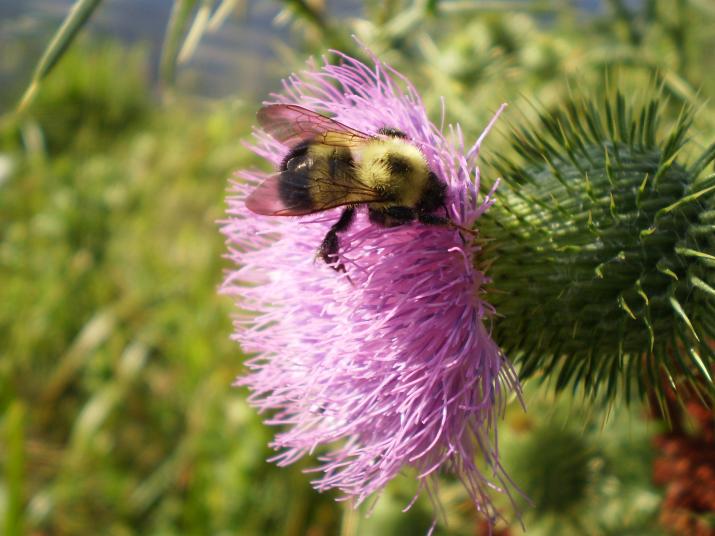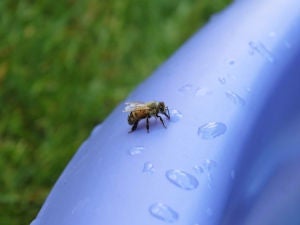Claire Preston

It is common knowledge that bees lend a big hand in pollinating our crops and flowers, but there is so much more than meets the eye to these remarkable buzzers! And even though many of us run away from bees and consider them nuisances, they are much more important to us than we once thought. Read on to learn some interesting facts about our pollinator friends!
Fountain of Youth
While most bees are hardwired for specific jobs, regular honeybees take on a variety of roles throughout their short lifetime. What is incredibly interesting is that these bees seem to change their brain chemistry before starting a different job! What’s even more interesting is that when older bees take on jobs that are generally reserved for younger members of the hive, their brains don’t just stop aging, they actually begin to age in reverse. This is really exciting for scientists as this discovery could help us slow the onset of dementia.
A Familiar Face
Ever felt like a bee was specifically targeting you? Even though everyone else called you crazy, you may actually have been right – bees have been shown to have facial recognition! They use the same methods humans use for recognition, called configural processing, where they group lines and shapes together to form a recognizable pattern.
Eye Spy
When they are first born, bees don’t know how to make honey, so much like us they need to be taught these skills by the veteran bees. New bees will watch their experienced elders and follow their lead, learning the necessary skills to complete their designated tasks. The young bees must learn quickly as their elder counterparts are nearing the end of their lifespan and aren’t around long to teach them.
Internal GPS
The worker honeybee is an expert at navigation and calculation. They can quickly work out the most efficient route to hit up the flowers they need to before heading back to the hive, and considering they visit 50 to 100 flowers in a single trip - this skill comes in handy.
Money Makers
Canadians consume an average of 2.2 lbs of honey per year, so we certainly keep these little guys busy, especially since the average bee only produces one-tenth of a teaspoon of honey in its lifetime! Bees also pollinate roughly 80 per cent of insect-pollinated crops, which generates approximately $20 billion worth of crops each year.
Hard Workers
During the cold winter months, bees can live up to nine months because they don’t have nearly as much work to do. However during the summer, bees live anywhere between three and six weeks – they literally work themselves to death, falling over from exhaustion! It has been much debated whether bees actually sleep or not, and many studies have concluded that bees are akin to narcoleptics in that for short periods of time (averaging only 30 seconds) bees can become unresponsive, droop their antennae and relax their body before flying off again and continuing their work.
Medicine Marvels
Bees use a resin called propolis to reinforce their hives; and we use it to fight off bacteria, viruses and fungi! Propolis can be harvested from the hive and used in natural medicine as a way to treat canker or cold sores, sore throats, and even eczema.
There is toxin found in bee venom called melittin which may prevent HIV – studies have shown that this toxin can poke holes into the viruses’ protective envelope, while leaving normal cells completely unharmed.
Bee stings may also ease the pain caused by rheumatoid arthritis; molecules in the bee venom increase the body’s levels of an anti-inflammatory hormone called glucocorticoid.
Career Moves
Most bees are hardwired to complete specific jobs. Scout bees constantly search for new food sources and bring food back to the hive, drone bees serve the sole purpose of mating with the queen, while soldier bees work as hive security guards, ejecting the sick bees and excess males from the hive during periods of famine. One per cent of these soldier bees adapt and become undertakers, removing the dead bees from the hive as necessary.
May I Have This Dance?
Honeybees communicate by dancing – an intricate dance is performed when returning to the nest to indicate to other bees the presence of food. Small variations in the dance tell the other bees about the distance, the direction to and the abundance of the food source.
Want to learn more about bees? Our Wild About Gardening website offers plenty of tips and information on how to plant for wildlife and watch these wonderful little pollinators help your garden grow!
- 0
- 1

